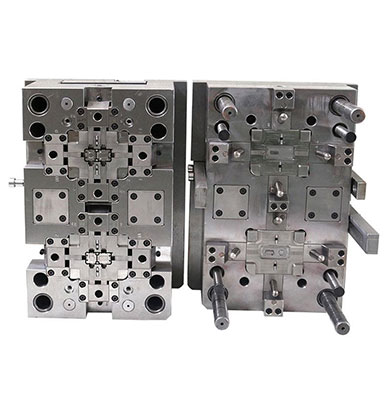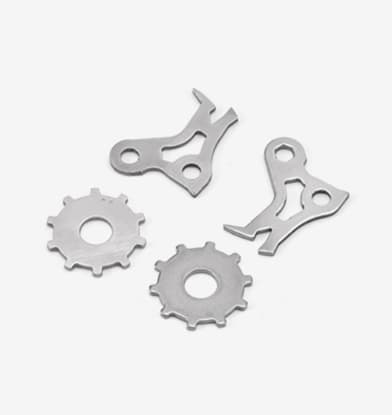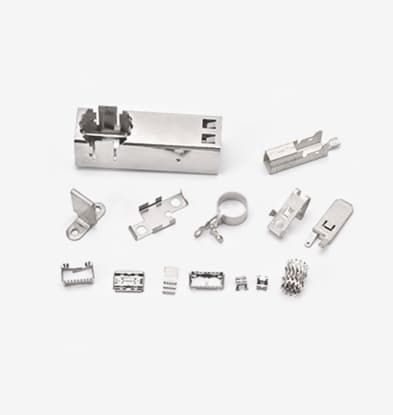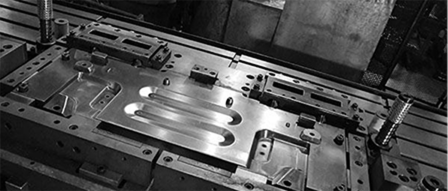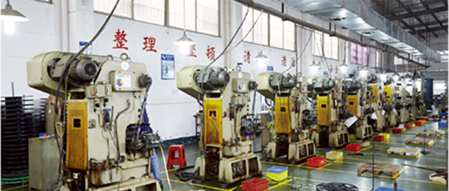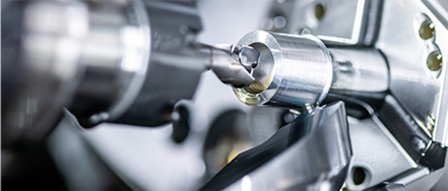Common Problems and Solutions in Stainless Steel Stamping Process
1. Reasons for scratches on the surface of stainless steel stamping
Scratches on the surface of stainless steel stamping parts are mainly due to the relative movement between the workpiece and the surface of the mold. Under the effect of a certain pressure, the blank and the surface of the mold part directly collide. In addition, the deformation heat of the blank causes the blank and metal chips to deposit on the surface of the mold, causing scratches on the surface of the workpiece.
2. The reasons for the rupture of stainless steel stamping parts
Austenitic stainless steel has a high cold hardening index, and a phase transformation-induced martensite phase will occur during deformation. The martensite phase is brittle and therefore prone to cracking. During plastic deformation, as the amount of deformation increases, the content of martensite induced will also increase with the increase of deformation amount, and the greater the residual stress caused, the easier it is to crack during processing. In the process of sheet metal stamping and forming, the main factors affecting product quality are the structure, performance and process parameters of the sheet metal. Therefore, the more uniform the structure of the sheet metal and the better the deep drawing performance, the less likely it is to break.
In addition, during the stainless steel stamping process, when the punch pressure acts on the stainless steel plate, the deformation resistance in the direction perpendicular to the plate surface is the largest, while the deformation resistance in the direction parallel to the plate surface is relatively small; when the resistance flows into the sheet material at the flange, as the stress increases, the flange is easily deformed, and the material that is less reinforced at the punch shoulder is more prone to fracture at the punch shoulder.
Die clearance is too small, uneven centering of convex and concave molds, lack of precision of mold base and mold guide, etc. will cause mold wear; continuous long-term stamping of the same mold will cause punch overheating, and mold design eccentric load will lead to increased lateral force , such as nibbling, punching angle or shearing, the lateral force will make the punch lean to one side, resulting in severe wear of the die, which will also cause the part to break.
The stamping performance of the sheet can be improved by optimizing the annealing process of the sheet. Strengthen the plane strain orientation of the internal grains, increase the deformation resistance of the sheet metal, and adjust the pressure distribution according to the forming state of the part during mold debugging to avoid cracking.
3. Reasons for stripping of stainless steel stamping dies
Factors such as the sharpness of the cutting edge of the mold, the mold input amount of the mold, and whether the gap between the mold and the mold are reasonable, etc., will all lead to the problem of material carrying in the mold; if non-special stamping oil is used, problems such as gumming and viscosity increase due to oil oxidation will also cause banding.
4. Rebound deformation of stainless steel stamping
All materials will spring back after being stretched and formed. Due to the high hardness of stainless steel, the material has a large rebound. When designing the molding mold, it is necessary to predict the amount of rebound of the material, do a good job of anti-rebound, and minimize dimensional issues caused by material springback.
5. Heat treatment of stainless steel stamping
Many stainless steel stamping and drawing parts have higher hardness requirements, but because the harder the material, the more difficult it is to stretch, sometimes it needs to be heat-treated after forming to meet the hardness requirements. However, the workpiece after heat treatment is prone to deformation, and the amount of deformation needs to be considered in the mold design.
6. Material selection of stainless steel stamping punch and die
The hardness of stainless steel is high, and the loss of the cutting edge of the mold will be relatively large. Therefore, when selecting the material of the punch and die, it is necessary to make a suitable choice according to the hardness of the stainless steel material.
7. Reasons for the quality of stainless steel stamping oil
The selection of stainless steel stamping oil is extremely important. Qualified stamping drawing oil contains sulfur and chlorine compound additives, which can prevent the workpiece from hardening, deformation, burrs, cracking and other problems. For the ease of cleaning of workpiece products, low-viscosity stamping and stretching oil should be used as much as possible.
Reasonable arrangement of process, use of special stamping and drawing oil, and selection of reliable raw materials can improve the quality of workpieces.

 English
English 